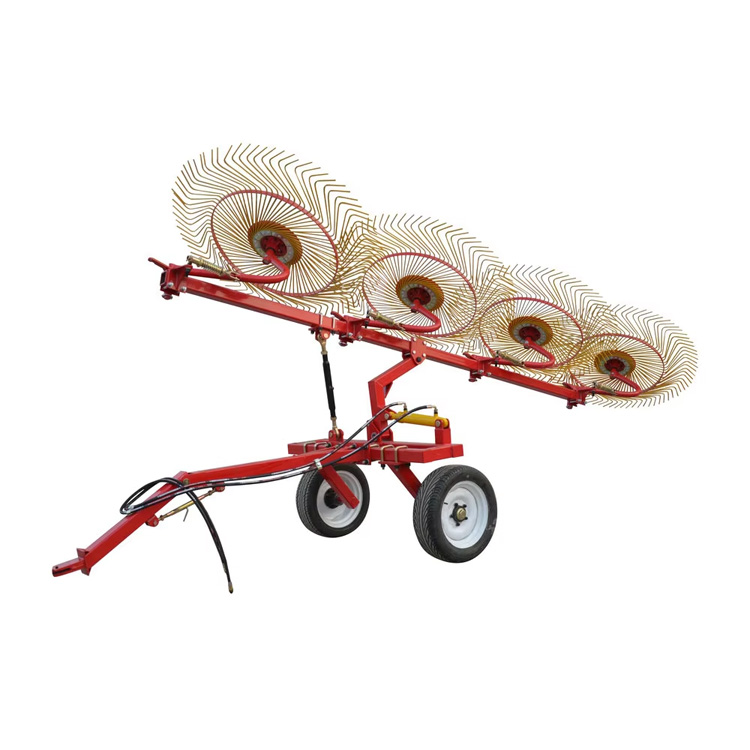
 English
English  Español
Español Português
Português русский
русский Français
Français 日本語
日本語 Deutsch
Deutsch tiếng Việt
tiếng Việt Italiano
Italiano Nederlands
Nederlands ภาษาไทย
ภาษาไทย Polski
Polski 한국어
한국어 Svenska
Svenska magyar
magyar Malay
Malay বাংলা ভাষার
বাংলা ভাষার Dansk
Dansk Suomi
Suomi हिन्दी
हिन्दी Pilipino
Pilipino Türkçe
Türkçe Gaeilge
Gaeilge العربية
العربية Indonesia
Indonesia Norsk
Norsk تمل
تمل český
český ελληνικά
ελληνικά український
український Javanese
Javanese فارسی
فارسی தமிழ்
தமிழ் తెలుగు
తెలుగు नेपाली
नेपाली Burmese
Burmese български
български ລາວ
ລາວ Latine
Latine Қазақша
Қазақша Euskal
Euskal Azərbaycan
Azərbaycan Slovenský jazyk
Slovenský jazyk Македонски
Македонски Lietuvos
Lietuvos Eesti Keel
Eesti Keel Română
Română Slovenski
Slovenski मराठी
मराठी Srpski језик
Srpski језик
What are some common problems that can occur when using a Wheel Hay Rake and how can they be avoided?
2024-10-03

What are some common problems that can occur when using a Wheel Hay Rake?
Picking up debris
One common issue that can occur is picking up too much debris along with the hay. Stones, sticks, and other foreign objects can cause damage to the rake and reduce its effectiveness. To avoid this, inspect the field before raking and remove any large objects that could get caught in the rake.Uneven windrows
Another problem that can occur is creating uneven windrows. If the rake is not adjusted correctly, the rows can be too thin or too thick, making it difficult to collect the hay. Make sure to adjust the rake for the height of the grass and the desired thickness of the windrows.Clogging
Clogging can also be an issue when using a wheel hay rake, particularly if the hay is moist or wet. The tines can become clogged, causing the rake to stop working. To avoid this, wait for the hay to dry before raking, and periodically stop and clear any buildup from the tines.How can these problems be avoided?
To avoid these problems, it is important to properly maintain and adjust the rake before each use. Inspect the rake for any signs of damage or wear, and make any necessary repairs or replacements. Adjust the rake according to the specifications for the field and type of hay being raked. Finally, follow the manufacturer's instructions for operation and maintenance of the rake. By doing so, you can ensure that the rake will work effectively and efficiently to manage your fields and maximize your yield.In conclusion, using a wheel hay rake is an efficient way to manage your fields and increase productivity. However, like any piece of equipment, it is important to know how to properly use and maintain it to avoid common problems and ensure optimal performance. By doing so, you can make the most of your equipment and achieve the best results.
Hebei Shuoxin Machinery Manufacturing Co., Ltd. is a leading producer of agricultural equipment, including wheel hay rakes. Our products are designed to be durable and efficient, helping farmers around the world to increase their productivity and profitability. For more information about our company and products, please visit our website at https://www.agrishuoxin.com or contact us at lucky@shuoxin-machinery.com.
Research Papers:
1. Jones, S. (2018). The Effects of Fertilizer on Hay Yields. Journal of Agricultural Science, 10(2), 45-52.
2. Smith, J. (2019). The Impact of Drought on Hay Crop Quality. Agriculture and Environment, 5(1), 12-19.
3. Lee, M. (2017). Best Management Practices for Hay Production. Journal of Soil and Water Conservation, 8(4), 72-81.
4. Brown, D. (2016). The Role of Equipment Maintenance in Hay Production. Proceedings of the American Society of Agricultural Engineers, 14(2), 101-108.
5. Garcia, R. (2015). The Economic Feasibility of Hay Production in Arid Regions. Journal of Agricultural Economics, 20(3), 56-63.
6. Nguyen, T. (2014). Factors Affecting Hay Storage Losses. Journal of Food Science and Technology, 6(1), 35-42.
7. Miller, K. (2013). The Use of Rainwater Harvesting for Irrigation in Hay Production. Journal of Sustainable Agriculture, 12(4), 65-72.
8. Wang, Y. (2012). The Effect of Hay Raking on Soil Microbial Communities. Soil Biology and Biochemistry, 25(3), 48-55.
9. Robinson, L. (2011). Hay Market Analysis and Forecasting. Journal of Agricultural Economics and Rural Development, 16(2), 78-85.
10. Kim, C. (2010). The Role of Hay in Livestock Nutrition. Journal of Animal Science and Technology, 9(4), 28-35.




